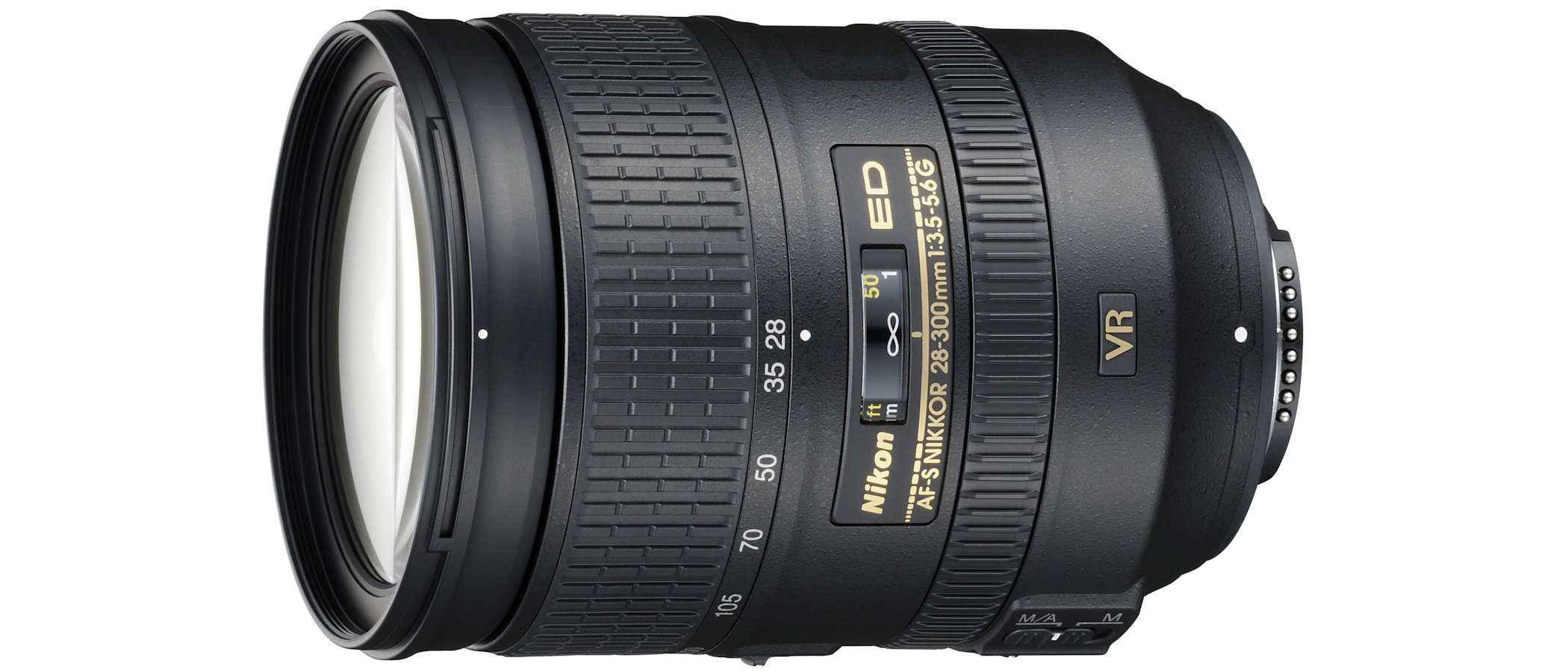Digital Camera World Verdict
With a high-quality optical line-up, effective Vibration Reduction and fast ring-type ultrasonic autofocus, this is a premium ‘superzoom’ lens for Nikon’s FX (full-frame) DSLRs. Naturally, it also works on DX (APS-C) format DSLRs, on which it gives an effective zoom range of 42-450mm, with proper super-telephoto clout. Image quality is pretty respectable but not a patch on that of Nikon’s newer Z 24-200mm f4-6.3 VR lens for mirrorless cameras. It’s also pretty weighty for a travel lens.
Pros
- +
Generous zoom range
- +
Optical VR
- +
Fast autofocus
Cons
- -
Limited viewing angle width
- -
Image quality isn’t the best
- -
Pretty heavy at 800g
Why you can trust Digital Camera World
The Nikon AF-S 28-300mm f/3.5-5.6G ED VR is a superzoom lens for full-frame cameras, which is something of a rarity compared with superzooms for crop sensor bodies. The extra quality enabled by an FX rather than DX format camera comes at the cost of extra weight and increased price. With a bigger image circle required to fill a full-frame sensor, this lens has a larger diameter and is hefty at 800g. It’s therefore less than ideal as a ‘travel lens’.
Specifications
Mount: Nikon F
Full frame: Yes
Autofocus: Yes
Stabilization: Yes
Lens construction: 19 elements in 14 groups
Angle of view: 53-5.3 degrees
Diaphragm blades: 9
Minimum aperture: f/22-38
Minimum focusing distance: 0.5m
Maximum magnification ratio: 0.32x
Filter size: 77mm
Dimensions: 83x115mm
Weight: 800g
Key features
Tamron used to make a competing 28-300mm FX format lens. The Nikon isn’t much more expensive yet has a faster aperture rating at the long end, a faster and quieter ring-type rather than motor-driven ultrasonic autofocus system, and a dual-mode optical stabilizer. It’s the same VR II generation fitted to the Nikon AFS DX 18-200mm lens, with Normal and Active modes. The former has automatic panning detection and the latter is more suitable for extreme vibration.
Quality glass includes two ED (Extra-low Dispersion) elements and three aspherical elements, aiming to enhance sharpness contrast. Conventional ring-type ultrasonic autofocus is quick and whisper-quiet for stills but poor for shooting video, as it tends to lurch from one focus distance to another.
The construction features a weather-sealed metal mounting plate and a zoom lock switch, to avoid the lens extending unwantedly while you’re carrying it around.
Performance
Helped by the inclusion of specialist glass and Super Integrated Coating, image quality is pretty good overall. Sharpness is respectable throughout the entire zoom range although short-end distortion is very noticeable. The VR system gives a 3.5-stop benefit in beating camera shake but overall performance is nowhere near as good as from Nikon’s Z 24-200mm for mirrorless cameras.
Lab results
We run a range of lab tests under controlled conditions, using the Imatest Master testing suite. Photos of test charts are taken across the range of apertures and zooms (where available), then analyzed for sharpness, distortion and chromatic aberrations.
We use Imatest SFR (spatial frequency response) charts and analysis software to plot lens resolution at the center of the image frame, corners and mid-point distances, across the range of aperture settings and, with zoom lenses, at four different focal lengths. The tests also measure distortion and color fringing (chromatic aberration).
Sharpness:
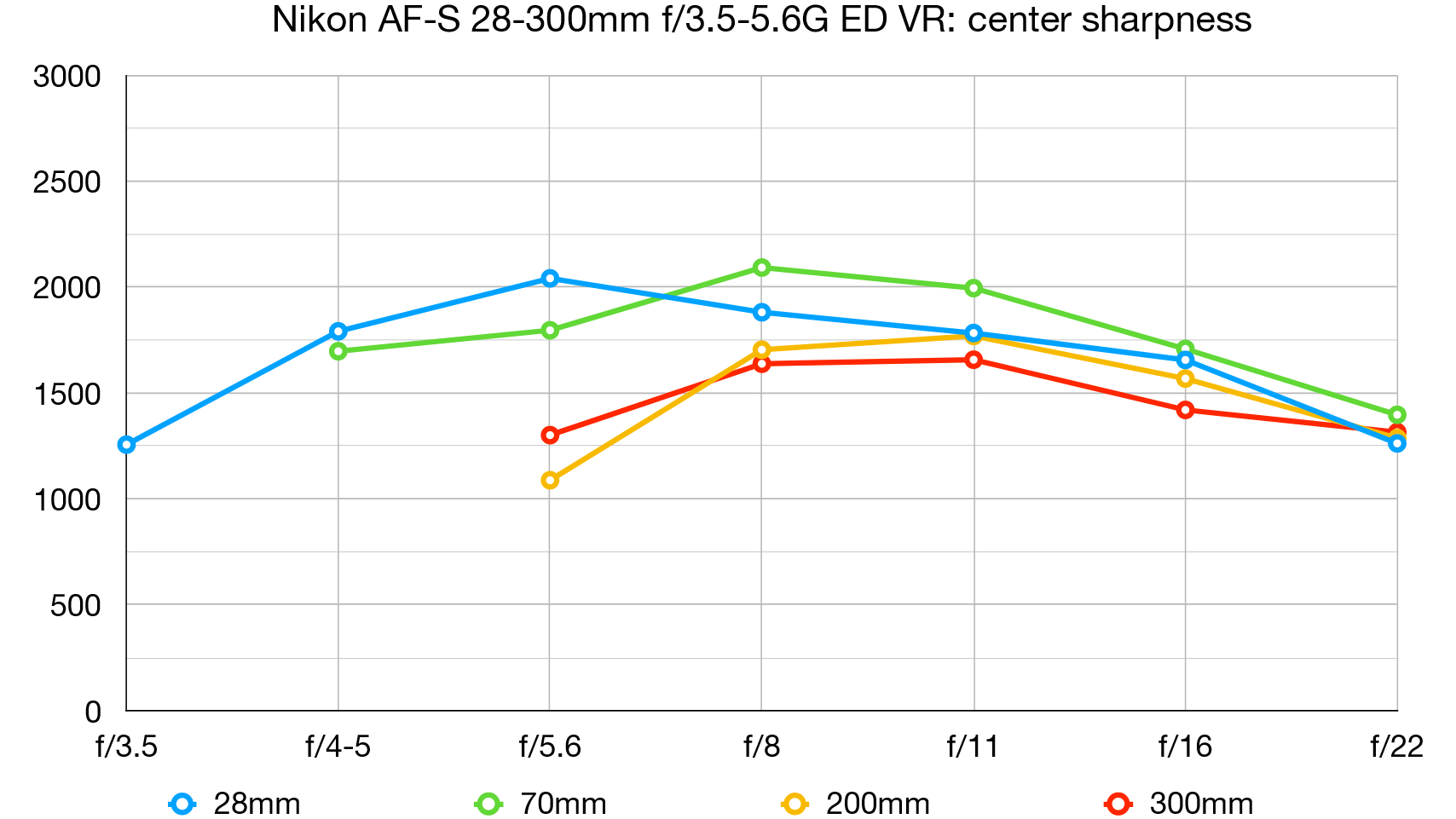
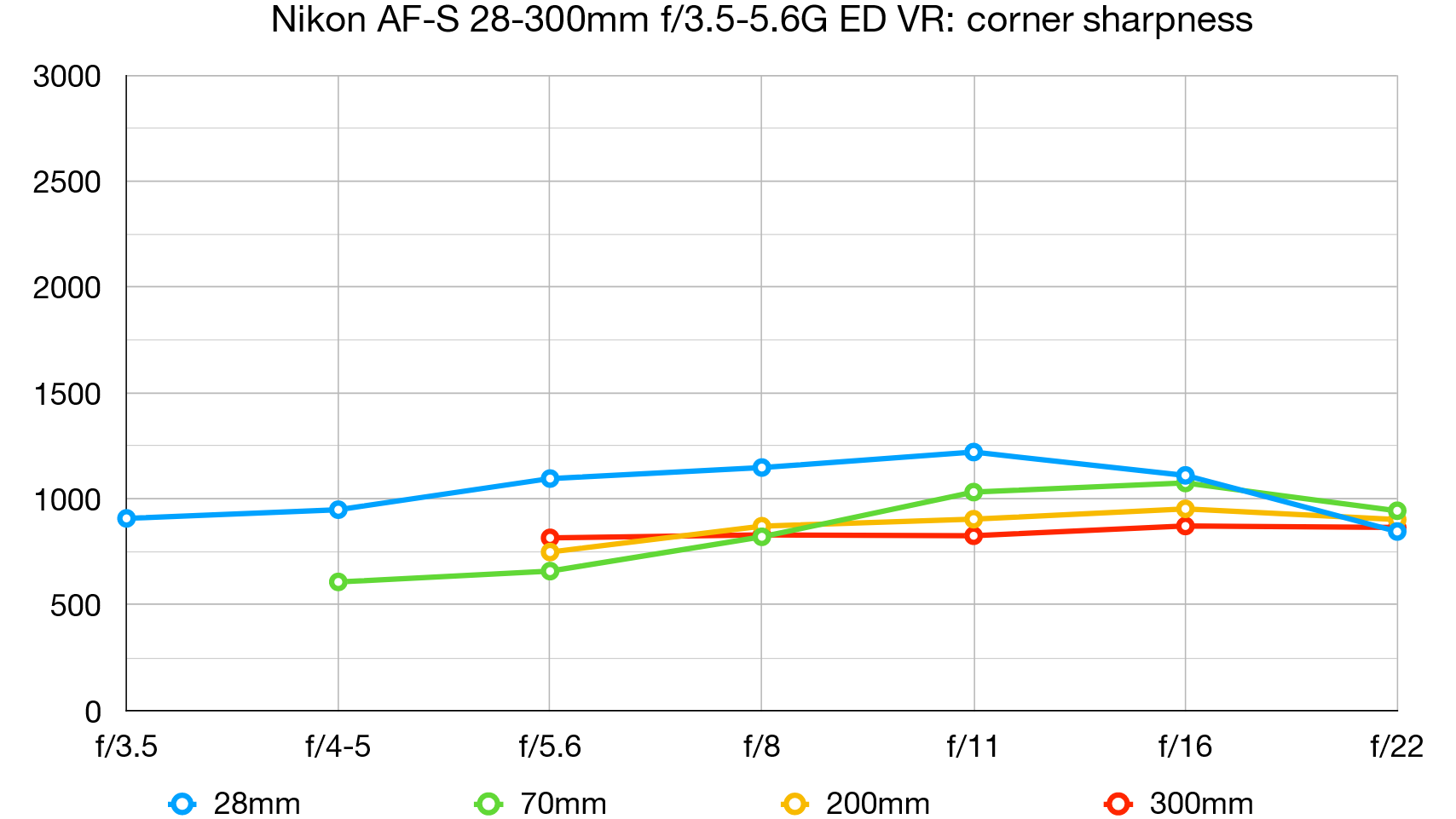
Apart from a dip in centre-sharpness at 200mm when shooting wide-open, it’s pretty respectable throughout the zoom range.
Fringing:
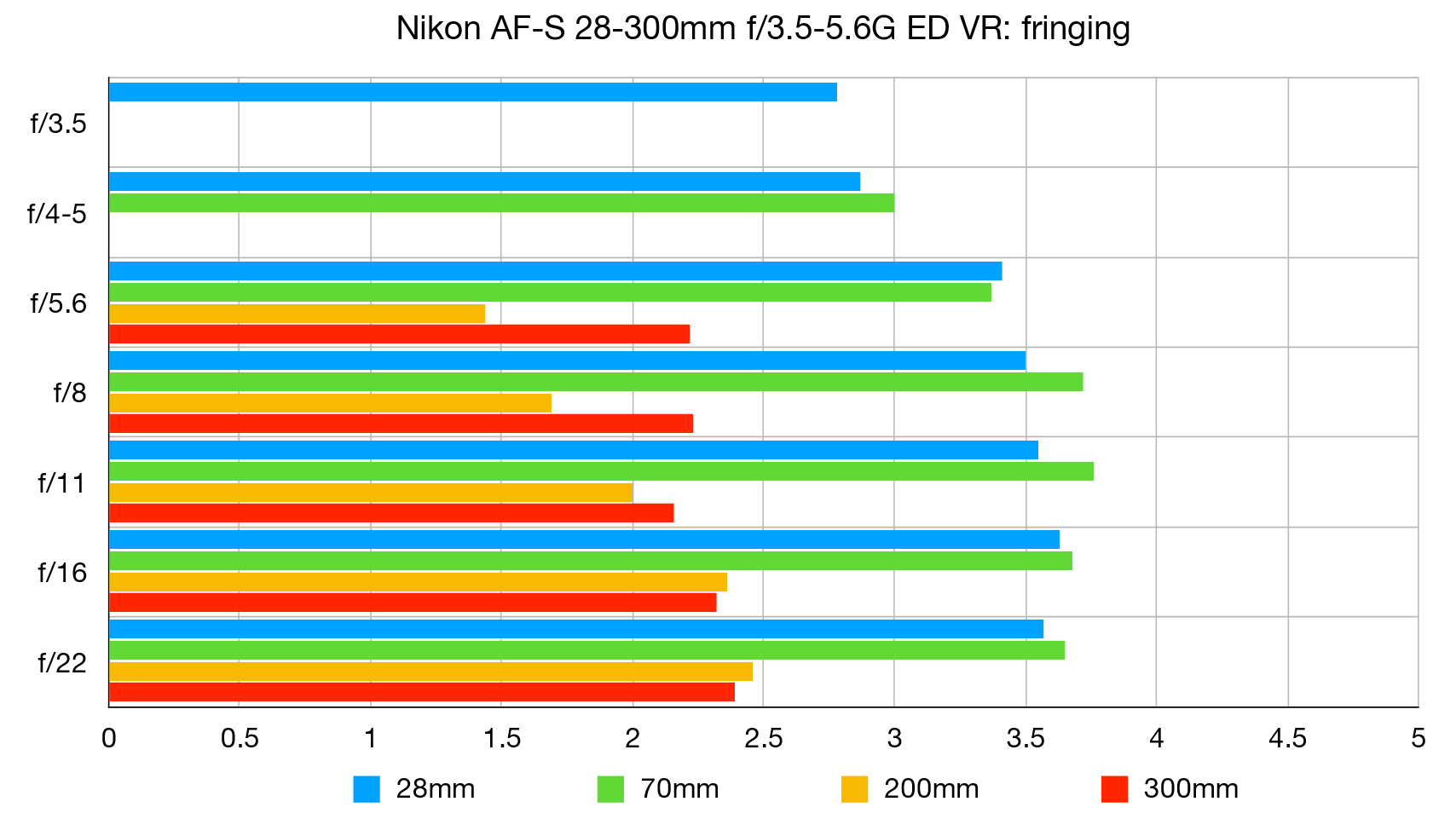
Levels of color fringing are a little worse than average at short to mid zoom settings.
Distortion:
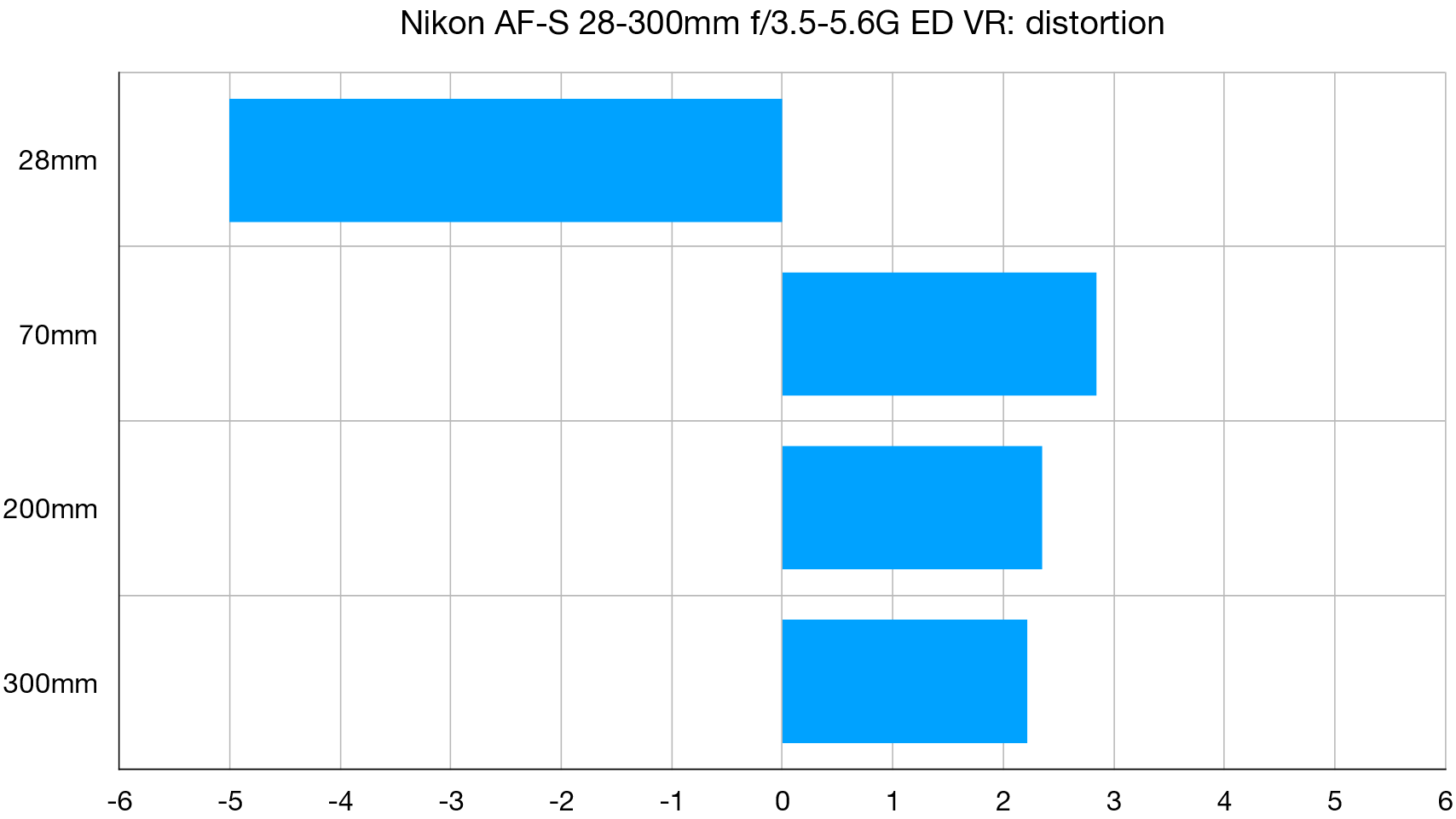
Barrel distortion is severe at 18mm and there’s moderate pincushion at mid to long zoom settings.
Verdict
With a high-quality optical line-up, effective Vibration Reduction and fast ring-type ultrasonic autofocus, this is a premium ‘superzoom’ lens for Nikon’s FX (full-frame) DSLRs. Naturally, it also works on DX (APS-C) format DSLRs, on which it gives an effective zoom range of 42-450mm, with proper super-telephoto clout. Image quality is pretty respectable but not a patch on that of Nikon’s newer Z 24-200mm f4-6.3 VR lens for mirrorless cameras. It’s also pretty weighty for a travel lens.
Read more:
• Best camera lenses to get
• Best Canon lenses
• Best Nikon lenses
• Best Sony lenses
Matthew Richards is a photographer and journalist who has spent years using and reviewing all manner of photo gear. He is Digital Camera World's principal lens reviewer – and has tested more primes and zooms than most people have had hot dinners!
His expertise with equipment doesn’t end there, though. He is also an encyclopedia when it comes to all manner of cameras, camera holsters and bags, flashguns, tripods and heads, printers, papers and inks, and just about anything imaging-related.
In an earlier life he was a broadcast engineer at the BBC, as well as a former editor of PC Guide.
